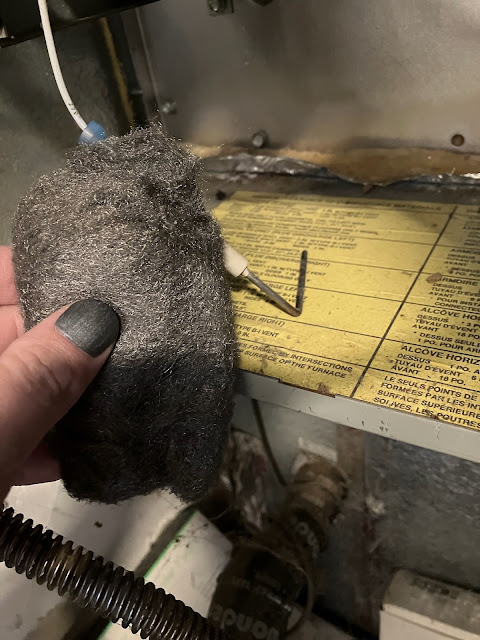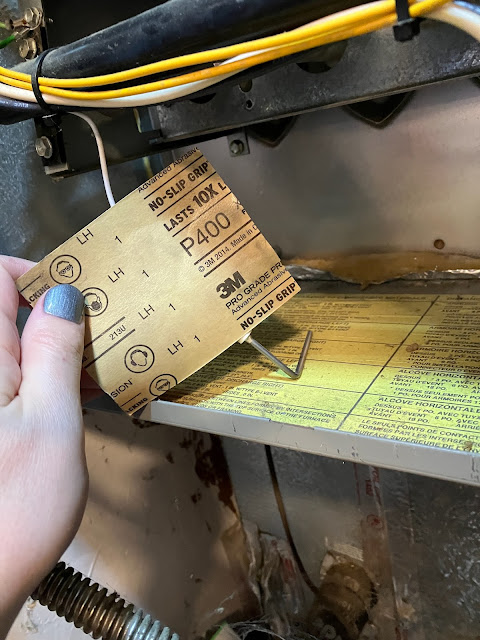In order to keep from filling your entire house with unburned natural gas (which would, at the very least, be a minor inconvenience), a modern gas furnace is equipped with what is known as a flame rod. This rod is a piece of corrosion-resistant metal (note: not corrosion-proof) which is formed such that the flame from the burner crosses it. A relatively high AC voltage is applied to it, and due to science and physics, that voltage conducts through the flame, but only in one direction, to the tune of a few microamperes (around 0.5 to 10 according to the internet). The furnace control board detects this rectified current and uses its presence as a positive confirmation that the natural gas is burning and not just building up until it explodes and levels your entire house.
But being an inanimate metal rod, poking into a literal burning hellfire, it tends to be subject to a bit of corrosion over time. This can reduce its ability to conduct into the flame. Thus, it must be cleaned or replaced from time to time.
So, in we go.
The flame rod is easy to spot, as it will be on the far end from the igniter and will have a single wire running to it. Also it will be a rod, and it will be in the path of the flame.
It's usually held in place by a single screw, in my case this was a 1/4" hex head.
And then it just slides right out, corrosion build-up and all.
I've seen various recommendations on what to use to clean this corrosion off, and decided to start with steel wool.
It took some of the larger chunks off, but beyond that it didn't really do much. So I brought out the big guns, relatively speaking: some 400 grit sandpaper.
This shined things up very nicely.
And installation is the reverse of removal.
Powering the furnace back on (and bypassing the interlock) we can observe it in action.
Mmm, toasty.








No comments:
Post a Comment